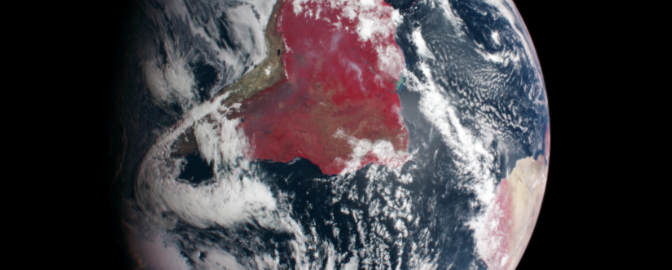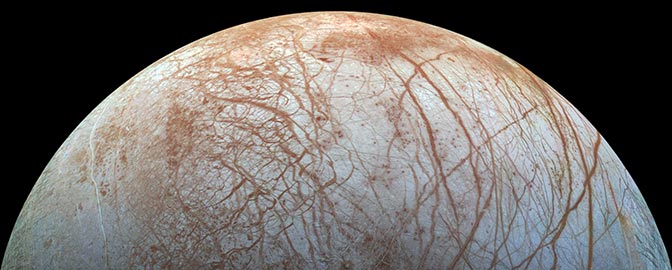NASA's fiscal year 2024 budget is $24.875 billion, a 2% cut relative to 2023. NASA's troubled Mars Sample Return project was the flashpoint in the congressional budget process. It survived a cancellation threat by the Senate, though it received a much lower funding level than requested while the project remains in reformulation.
Overall, NASA's topline amount had its worst performance between the requested amount and the final appropriated amount since 1992. The Biden Administration had proposed $27.2 billion for NASA's 2024 fiscal year, a 7.1% increase compared to 2023. That budget would have increased funding across the board, primarily supporting the Artemis lunar exploration program, Mars Sample Return, Earth Science, and technology development.
A divided Congress, however, instituted strict spending caps for 2024 and 2025. Facing a smaller allotment by which to fund the government, congressional appropriators cut NASA's budget by 2% relative to the previous year, $2.3 billion less than the requested amount.
NASA's budget during the Biden Administration. The vertical axis displays both NASA's total congressional appropriation in billions of dollars and the amount requested by the President. The horizontal axis is fiscal year. NASA's full budget history dataset is available to view or to download as an Excel spreadsheet.
Within this restricted budget environment, the Artemis program emerged as the clear congressional priority: it was one of the few programs to grow in funding relative to the previous year. NASA's science directorate, however, was not so lucky. It lost nearly half a billion relative to 2023, with all the cuts coming from the Mars Sample Return mission within the Planetary Science Division. Nearly every other of NASA's five science divisions remained flat, except Astrophysics, which grew by a modest $20 million (about 1%). Even though many science divisions didn't get cut, ongoing inflation has cut into NASA's buying power over the past few years, and funding has not kept pace. The result is that many NASA science projects are under enormous budgetary pressure with no new funding coming their way.
| 2023 Enacted | 2024 PBR | House CJS | Senate CJS | Final | |
|---|---|---|---|---|---|
| NASA | $25,384 | $27,185 | $25,366 | $25,000 | $24,875 |
| Science | $7,795 | $8,261 | 7,380 | $7,341 | $7,334 |
| Planetary Science | $3,200 | $3,383 | 3,100 | $2,683 | $2,717 |
| ↳ Mars Sample Return | $822.3 | $949 | $949 | $300 | ≥$300* |
| ↳ NEO Surveyor | $90 | $209.7 | $209.7 | $209.7 | $209.7 |
| ↳ VERITAS | $57.2 | $1.5 | $1.5 | $1.5 | $1.5 |
| Earth Science | $2,195 | $2,473 | $2,000 | $2,219 | $2,195 |
| Astrophysics | $1,510 | $1,557 | $1,485 | $1,544 | $1,530 |
| ↳ Roman Space Telescope | $482.2 | $407.3 | not specified | $407.3 | $407.3 |
| Heliophysics | $805 | $751 | $710 | $805 | $805 |
| Biological & Physical Science | $85 | $96.5 | $85 | $90 | $87.5 |
| Deep Space Exploration | $7,469 | $7,971 | $7,971 | $7,736 | $7,666 |
| Orion Crew Vehicle | $1,339 | $1,225 | $1,225 | $1,225 | "up to" $1,339 |
| SLS | $2,600 | $2,506 | $2,506 | $2,506 | "up to" $2,600 |
| Exploration Ground Systems | $799.2 | $794.2 | $794.2 | $794.2 | not specified |
| Artemis Campaign Development | $2,600 | $3,235 | $3,235 | ~$3,000 | not specified |
| Space Technology | $1,200 | $1,392 | $1,205 | $1,118 | $1,100 |
| Space Operations | $4,250 | $4,535 | $4,345 | $4,200 | $4,220 |
| Aeronautics | $935 | $996 | $946 | $935 | $935 |
| STEM Engagement | $143.5 | $157.8 | $89 | $143.5 | $143 |
| Safety, Security, & Mission Services | $3,130 | $3,369 | $3,136 | $3,100 | $3,129 |
| Construction and Environmental Compliance | $414.3 | $453.7 | $247.9 | $379 | $300 |
| NASA Inspector General | $47.6 | $50.2 | $47.6 | $47.6 | $47.6 |
All values are in millions of dollars. Directorate/top-level line-items are in boldface, divisions and major projects are in standard formatting; sub-programs are in italics. All major directorates are listed, but not all sub-divisions or projects are included here. *"no less" than $300M and "up to" the requested level of $949M.
The President's FY 2024 Budget Request for NASA
| 2023 Enacted | 2024 PBR | % Change | |
|---|---|---|---|
| NASA | $25,384 | $27,185 | +7.1% |
| Science | $7,795 | $8,261 | +%6 |
| ↳ Planetary Science | $3,200 | $3,383 | +%5.7 |
| ↳ Earth Science | $2,195 | $2,473 | +12.7% |
| ↳ Astrophysics | $1,510 | $1,557 | +3% |
| ↳ Heliophysics | $805 | $751 | -6.7% |
| ↳ Biological & Physical Science | $85 | $97 | +%13.5 |
| Exploration | $7,469 | $7,971 | +6.7% |
| ↳ Orion Crew Vehicle | $1,339 | $1,225 | -8.5% |
| ↳ SLS | $2,600 | $2,506 | -3.6% |
| ↳ Human Landing System | $1,486 | $1,881 | +27% |
| Space Technology | $1,200 | $1,392 | +16% |
| Space Operations | $4,250 | $4,535 | +6.7% |
| ↳ Commercial LEO Development | $224 | $228 | +1.8% |
| Aeronautics | $935 | $996 | +6.5% |
| STEM Engagement | $143.5 | $157.8 | +10% |
| Safety, Security, & Mission Services | $3,130 | $3,369 | +7.7% |
| Construction and Environmental Compliance | $414.3 | $454 | +9.5% |
| NASA Inspector General | $47.6 | $50.2 | +5.5% |
All values are in millions of dollars. Directorate/top-level line-items are in boldface, divisions and major projects are in standard formatting; sub-programs are in italics. All major directorates are listed. Only selected divisions and projects are included. For further detail see the FY 2024 NASA Budget Request.
Explore this data. View historical NASA budget data, including breakdowns by fiscal year, and comparisons to total U.S. spending and GDP, on this Google Spreadsheet.
Highlights included:
- Increase Mars Sample Return funding to $949M in 2024, with the following warning "costs are expected to increase beyond what is shown in the outyear profile in this budget. To address this budget challenge, NASA will have to either reduce funding for other activities within the Science Program or descope elements of the Mars Sample Return mission."
- An indefinite delay of the VERITAS Venus mission "due to Jet Propulsion Laboratory (JPL) workforce issues raised in the Psyche Independent Review Board findings. NASA will continue to support the VERITAS science team."
- Proposes $210 million for NEO Surveyor "to support a June 2028 launch readiness date."
- $30 million to increase contributions to the European Space Agency's Rosalind Franklin rover "previously a joint Europe/Russia mission, which will search Mars for indications of ancient life"
- Increase funding for Artemis' Human Landing System program by 27% to support "additional work with SpaceX to upgrade the version of Starship used for the Artemis III mission [and] invite other U.S. companies to provide new lander development and demonstration missions from lunar orbit to the surface of the Moon with an initial demonstration on Artemis V."
Note: all quotes are from NASA's FY 2024 president's budget request and related documents.
President's Budget Request Source Documents
Congressional Activity
The Senate moved its funding legislation for NASA out of committee on July 13th, 2023, by a vote of 28 - 1. It provided $25 billion to the space agency, a cut of more than $300 million from the prior year and over $2 billion less than requested. Mars Sample Return was targeted by the Senate for cost overruns, and provided only $300 million — $649 million less than requested — and directed NASA to restrain the total budget to $5.3 billion or face cancellation.
The House released its NASA budget the same week but didn't publish its explanatory text that detailed spending directives until November. The House proposed $25.3 billion for NASA, and met the full FY 2024 requested amount for human exploration and Artemis. It proposed a similar cut to NASA's Science Mission Directorate as the Senate, though instead of a major cut to the Planetary Science Division (as proposed by the Senate) every science division would be cut to some degree under this proposal. This allowed the House to fully fund Mars Sample Return at $949M.
On March 3rd, 2024, well into the fiscal year, House and Senate appropriators released their compromise funding bill for NASA. The agreement generally favored the Senate's proposal. NASA's top line shrank even further, down to $24.88B — less than either the House or Senate proposal. This represents a 2% cut from FY2023 (not including inflation) and is NASA's worst funding outcome relative to the presidential budget request (-8.5% below) since FY 1992 (-8.9%).
The cut to NASA's Science directorate was maintained, though it was entirely focused on Mars Sample Return, as originally proposed by the Senate, gutting the program by $522 million to "not less than" $300 million in 2024. However, NASA was granted authority to spend "up to" $949 million on the project if it saw fit, though no additional funds were provided to do so. Spending above $300M in FY 2024, if necessary, would have to come from another project within the agency. Whether that will be necessary given the current uncertainty and ongoing re-evaluation of the project is not clear.
The final congressional text was far more supportive of MSR than the Senate, specifically stating that the original Senate text threatening cancellation was not adopted. It went on to say that "MSR is the highest priority of the 2022 Planetary Science Decadal Survey", that the "Independent Review Board did not recommend cancelling MSR" and that the agency shall not "engage in further workforce reductions of the MSR program" without consultation with Congress. So while the money didn't show up, the political support for the program appears to have solidified.
Senate FY 2024 Source Documents
- FY 2024 Commerce, Justice, Science (CJS) legislative text
- FY 2024 Commerce, Justice, Science committee report text (NASA section only)
House FY 2024 Source Documents
- FY 2024 Commerce, Justice, Science (CJS) legislative text (subcommittee mark)
- FY 2024 Commerce, Justice, Science (CJS) committee report text (NASA section only)
Final FY 2024 Source Documents
Additional Resources and Analysis
The U.S. Senate threatens to cancel Mars Sample Return
The House has yet to weigh in. And much can still happen before this threat is realized.
What’s going on with Mars Sample Return?
NASA's biggest science project is undergoing an unprecedented second independent review amidst growing cost estimates and daunting technical and managerial challenges.
Analysis: NASA's 2024 budget is a solid foundation facing political headwinds
The requested $27.2 billion would keep all major human and robotic initiatives going forward, though most of it would be offset by inflation.
The Planetary Society's official statement on the FY 2024 NASA budget request
The Planetary Society released a statement welcoming the Biden Administration’s proposal to increase NASA’s budget by 7% in 2024, which supports the Artemis return to the Moon, Mars Sample Return, and a 2028 launch date of the Near-Earth Object Surveyor planetary defense mission.
Your Guide to NASA's Budget
How big is NASA's budget right now? What was it like in the past? How does it compare to the rest of government spending? These answers, as well as charts, raw data, and original sourcing, are contained within.


 Explore Worlds
Explore Worlds Find Life
Find Life Defend Earth
Defend Earth





